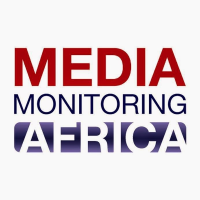On November 17, four journalism professionals and lecturers from around the world presented research on capacity building, social media, video reporting and new data tools for #GIJC17’s academic track.
DW Akademie project manager Nadine Jurrat shared her findings on capacity development strategies for investigative journalism in Eastern Europe, Latin America and Sub-Saharan Africa.
DW Akademie trains Deutsche Welle reporters, supports media freedom worldwide and has its own masters program.
The research Jurrat presented was based on interviews with 33 experts and an online survey that received 111 responses from 46 different countries.
Jurrat asked the interviewees about trends in investigative journalism, media viability strategies and capacity building for future reporters.
Her findings show that the five biggest obstacles to investigative journalism are lack of funds, a non-supportive journalistic environment, political pressure, shortage of skilled journalists and security issues.
When asked what was most needed for investigative journalism, the interviewees’ top responses were capacity building, international cooperation, mentoring, an enabling legal environment and managerial consultancy.
Jurrat ended her presentation with eight recommendations to develop investigative journalism, including:
- Engaging the audience seems to be a key factor for viability.
- Staff structure needs to be adjusted; journalists as well as professionals should do fundraising, marketing, administration, etc.
- More capacity building for editors is needed.
- University education should become more practical and be adjusted to current needs.
- Engage “outside” professionals to develop innovative formats including techies, graphic designers, etc.
- Think strategically about who to cooperate with, where to invest and how to get funds.
- For donors and media development: look at comprehensive support.
- Learn from others and conduct more evaluations.
Storytelling in Sri Lanka
In Sri Lanka outlets are politically affiliated, reporters are not always safe and there is a lack of support for investigative and multimedia journalism. During the panel, however, M.C. Rasmin also showed that his home country has many opportunities for investigative video storytelling.
Rasmin, who works as deputy chief of party at the International Research & Exchanges Board in Sri Lanka, told the audience that projects such as the Investigative Video Storytelling program are a great way to train young journalists and create a relationship between local communities and media.
“The community is a key supporting entity,” Rasmin said.

Journalists work together with local communities in Sri Lanka. Photo: Slide presentation.
The program is focused on working with youth, engaging the community, safety and source building.
Sri Lanka’s widespread use of mobile phones, the prominence of web-based media and an increase in media literacy present opportunities to develop more programs like it.
The group recruited 30 young journalists to create investigative videos in seven steps: identify the story, create a community-based editorial board, formulate a hypothesis, develop a support base, collect data, film the story and validate before publishing.
“The process of the story making is equally important as the purpose of the story,” Rasmin said. “It is a creative and sensitive process meant to engage institutions and individuals to explore a hypothesis.”
Rasmin concluded with key issues that need to be addressed to ensure a future for investigative journalism in Sri Lanka. He said that Sri Lankan media needs to be structurally transformed to be more independent and that “policy-level intervention” is needed to increase media pluralism.
To address these issues, there is a need for a dedicated organization that goes beyond “isolated training and workshops.”
South Africa’s Digital Newsrooms
Media Monitoring Africa is an NGO that promotes free, fair, ethical and critical media culture across the continent, according to its website.
Sarah Findlay, the program coordinator of MMA’s policy unit, shared the results of their research about how three newsrooms in South Africa have been affected by digital technology and social media.
 The interviews show that South African newsrooms experienced an increase in the speed and immediacy of news production. This evolution put together with a decrease in the number of newsroom employees, means that journalists are under more pressure than ever before.
The interviews show that South African newsrooms experienced an increase in the speed and immediacy of news production. This evolution put together with a decrease in the number of newsroom employees, means that journalists are under more pressure than ever before.
Next, MMA looked into how this affected the quality of reporting. They looked at two case studies, of which Findlay presented one during the panel.
“We analyzed 418 articles that covered the Marikana Commission,” Findlay said. “This commission was set up to consider the events that lead to the death of 44 people, including the shooting of 34 miners by the South African Police Service, at a North West mine in 2012.”
The research featured an analysis of which voices were featured in the coverage.
Findlay found that 39 percent were government voices, 27 percent came from the justice system and 17 percent were political party members, meaning that 83 percent were related to the ANC-led government. Of the remaining 17 percent, five percent was comprised of people related to unions, four percent were professionals and two percent were regular citizens.
The coverage had five main messages:
- Unions are largely to blame for miners’ deaths.
- Families are awaiting the outcome of the commission.
- Cyril Ramaphosa (former businessman, current Deputy President) killed the miners.
- President Jacob Zuma is protecting his own interests.
- The government protected the mine, not the workers.
MMA concluded that the coverage is dominated by sources with political and social power, that most newsrooms share opinions on who is to blame and that as journalists are under more pressure, it is easier for agents such as PR companies to shift the narrative.
“Technology reinforces the power dynamics in terms of who is accessed — it remains the powerful, political and remains dominated by men,” Findlay said. “While social media presents more opportunities for citizens to be heard, the system as a whole continues to reproduce the same constraints in terms of power dynamics as before.”
Visualizing Public Procurement
Freelance journalist Adriana Homolova presented her visualization project Elvis, which turns raw public spending data into a “sexy, tidy, filterable node network,” according to the website.
Using Elvis, Homolova researched the differences between Slovakia and the Netherlands when it comes to corruption in public spending.
Red flags denoting corruption differ from country to country. In Slovakia, there are cases where government-project tenders are tailored to only fit one company.

“If a state-owned hospital in Slovakia would want a particular company to deliver the CT scanner, it would tailor the tender description so no other company can sign up for the competition,” Homolova’s paper indicates.
In the Netherlands, figuring out tender corruption is more complex.
“If a Dutch municipality would want a particular company to win a tender it would call other companies to submit pro-forma applications and the sole bidder is therefore obstructed by dummy applicants,” the paper says. “As such, the average number of bids per tender in Slovakia is one, as opposed to five in the Netherlands.”
By using network visualizations, it can be easier to spot corruption and uncover structural issues. The research found that using networks has the potential to uncover which agents in public procurement are corrupt.
Jelter Meers is a Belgian investigative reporter who works for the Investigative Journalism Education Consortium based at the University of Illinois. He helped coordinate the academic track at #GIJC17 and has worked on topics ranging from the agrichemical business to human trafficking.
